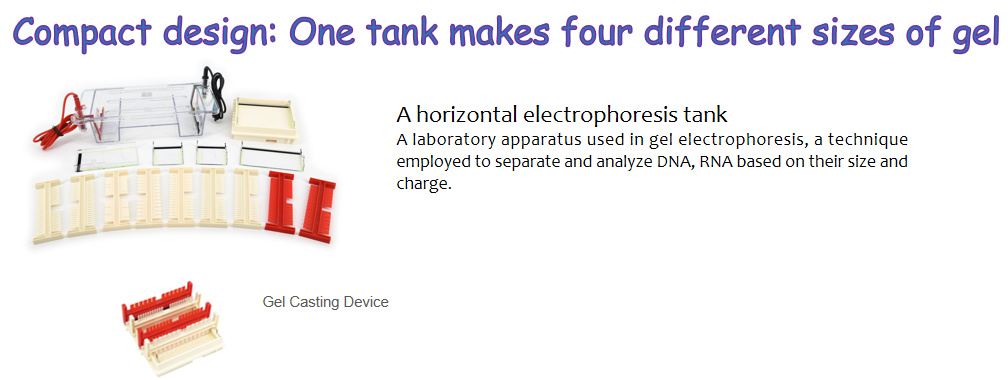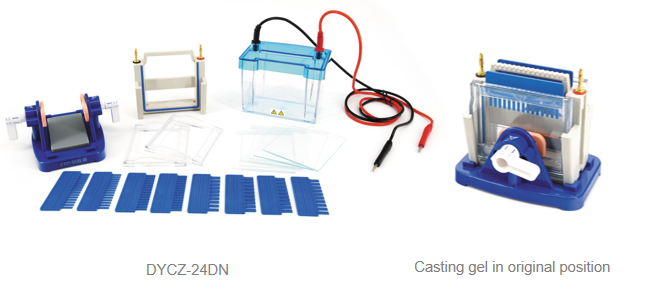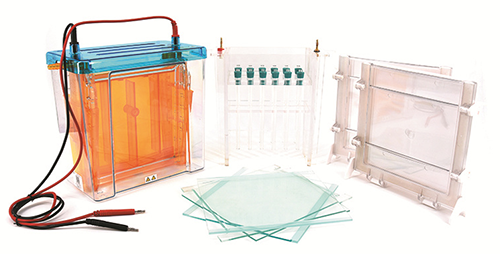Biological cells are composed of a variety of large and small molecules. Understanding the structure and function of various biological molecules is the foundation of delving into the secrets of life.
Biological small molecules are generally categorized into several major classes, such as carbohydrates, lipids, amino acids, nucleotides, and more. The significance of these biological small molecules lies not only in their role as the fundamental building blocks of larger biological macromolecules, such as proteins composed of amino acids, nucleic acids composed of nucleotides, and polysaccharides composed of monosaccharides, but also in the fact that many of these small molecules themselves play crucial physiological functions within cells.
Proteins, nucleic acids, and polysaccharides are three major classes of biological macromolecules.
Electrophoresis technology can be used to analyze and determine the size of various molecules, not limited to nucleic acids but also including proteins, peptides, small molecules, and more. Choosing the appropriate electrophoresis method and conditions is done based on the molecular weight of the molecules you want to analyze.
Here are some general recommendations to help you choose the appropriate electrophoresis method based on molecular weight:
Large Molecules: If you need to analyze large molecules such as large DNA fragments or proteins, you typically use gel electrophoresis methods like agarose gel electrophoresis or polyacrylamide gel electrophoresis. These gels can accommodate large molecules and effectively separate them.
Electrophoresis Tank DYCP-31DN for agarose gel electrophoresis
Medium-sized Molecules: Medium-sized molecules like DNA fragments of a few hundred base pairs or proteins in the range of several thousand to tens of thousands of Daltons can be separated using polyacrylamide gel electrophoresis, which is a commonly used method for many medium-sized molecules.
Electrophoresis Tank DYCZ-24DN for protein gel electrophoresis
Small Molecules: For smaller molecules like proteins under a few hundred Daltons, peptides, or small chemical compounds, high-resolution techniques like capillary electrophoresis or capillary gel electrophoresis can be used. These techniques are highly sensitive for the separation and detection of small molecules.
Very Large Molecules: If you need to analyze extremely large molecules, such as large genomic DNA, you typically use techniques like pulsed-field gel electrophoresis (PFGE) or specialized methods designed for handling such massive molecules.
Two-dimensional Electrophoresis: For complex mixtures or when you need to analyze molecules of different sizes, two-dimensional electrophoresis may be a good choice. This approach combines two or more different electrophoresis techniques to achieve higher resolution.
2-D Protein Electrophoresis Cell DYCZ-26C
Beijing Liuyi Biotechnology Co., Ltd. (formerly Beijing Liuyi Instrument Factory) was founded in 1970. It is a state-owned technology enterprise specializing in the production of biochemistry and molecular biology laboratory analytical instruments. The company has a registered capital of 20 million yuan. It has 80 employees in total.
Liuyi has specialized in manufacturing electrophoresis instruments for more than 50 years with its own processional technical team and R&D center. It has reliable and complete production line from design to inspection, and warehouse, as well as marketing support. The main products are Electrophoresis Cell (tank/chamber), Electrophoresis Power Supply, Blue LED Transilluminator, UV Transilluminator, Gel Image & Analysis System etc.
It provides various eletrophoresis products for analyzing and determining the size of various molecules. Choose Beijing Liuyi Biotechnology and let it help you to do experiment.
We are now looking for partners, both OEM electrophoresis tank and distributors are welcomed.
If you have any purchasing plan for our products, please don’t hesitate to contact us. You can send us message at email [email protected] or [email protected], or please call us at +86 15810650221 or add Whatsapp +86 15810650221, or Wechat: 15810650221
Post time: Oct-24-2023






